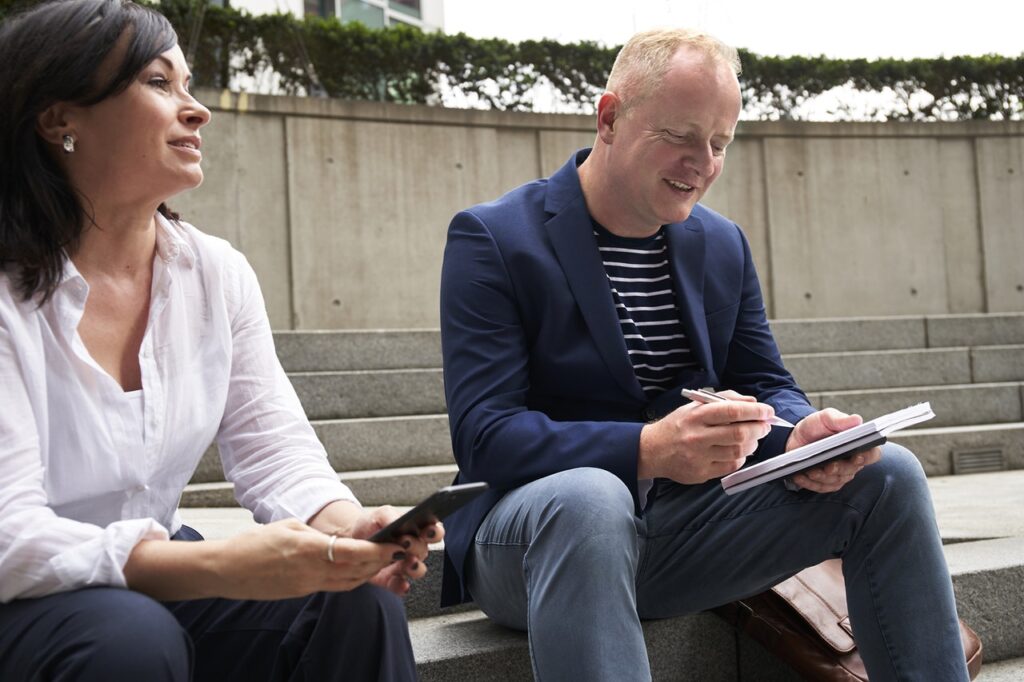All over the globe, companies are placing a greater emphasis on global leadership development than ever before. There are many reasons for this, the main one being that the need for global leaders has increased exponentially in every major industry.
In order to develop global leaders within an organization, the most successful approach is to create and launch a global leadership development (GLD) program for company employees. But implementing this type of program comes with a unique set of challenges. Many companies feel that their GLD program is only moderately effective, if at all.
To ensure the success of a customer’s GLD program, eurac follows a set of best practice principles in setting up a program. Principle 9, among others of these best practice principles, is to implement peer coaching.
It’s no surprise that communication and global leadership go hand in hand. A lack of communication within a GLD program could be why your program is falling short of expectations. Incorporating peer coaching sessions within the program is a simple yet elegant solution to boost communication practices.
In this article, we take a closer look at peer coaching, why it’s so beneficial to any GLD program, and how you can structure a peer coaching session in your own company.
Contents
What is Peer Coaching?
Peer coaching is the practice of professional colleagues coaching each other in order to build new skills and improve on current ones. Here is a more thorough definition of peer coaching from the Association for Supervision and Curriculum Development (ASDC):
“Peer coaching is a confidential process through which two or more professional colleagues work together to reflect on current practices; expand, refine, and build new skills; share ideas; teach one another; conduct classroom research; or solve problems in the workplace…”
Contrary to what you might think, the word coaching does not imply that one individual holds a higher status than the others. There is no single coach in this situation. Rather, each person acts as a coach to his or her peers in one way or another.
The Benefits of Peer Coaching
Peer coaching is a practice that is most often used in an educational setting among teaching professionals. Just as it shows results in the classroom, the same is true of peer coaching between colleagues in corporate environments.
Promoting communication among colleagues is one of the main benefits, but it’s certainly not the only one. There are five main benefits that can result from facilitating peer coaching sessions within a company setting:
- Providing peer-to-peer feedback and insight
- Empowering individuals to focus on developing new skills
- Improving company dynamics through team motivation
- Enabling leadership development among peer mentors
- Improving team performance thanks to clearer expectations

How Peer Coaching Benefits a Global Leadership Development Program and Its Participants
Let’s look more in-depth into each of the benefits mentioned above, specifically how they can benefit the participants of a company’s GLD program.
Benefit #1: Providing Peer-to-Peer Feedback
Receiving feedback from a manager is to be expected, but receiving feedback from peers is not nearly as common. It should be, though, since constructive criticism from just one source offers only a single perspective. A team is not solely comprised of one perspective, but many. Research even shows that teams perform better when divergent perspectives are present.
By implementing peer coaching sessions into a global leadership program, there is the potential for feedback to come from all angles. This provides a great deal of insight, especially since team members are often more directly involved in the project at hand than a manager.
Benefit #2: Empowering Individuals
By establishing a fixed job description for each employee, a company is putting a limit on employee potential. Workplace skills are not meant to be one-dimensional, especially in the modern workplace where roles are becoming much more fluid.
By creating opportunities for peer mentoring, you are empowering your employees to learn new skills. And not from a textbook or a powerpoint presentation, but from each other. Not only does this empower employees to learn new skills, but it creates the opportunity to share knowledge and act as the teacher.
Benefit #3: Improving Company Dynamics
“There’s no I in team” may be a cliche, but there is a great deal of truth to this statement. In order to be successful, a team must work together and motivate each other to keep pushing forward. Creating this team dynamic is yet another perk for GLD participants with regular peer coaching sessions.
However, you should know that in any team, conflict can arise. Each team member comes with a unique personality, and heads can butt from time to time. One of the interpersonal competencies of a global leader is to learn how to manage these differences and handle conflict in a constructive way. Peer coaching sessions provide the perfect setting for effective and constructive conflict resolution.
Benefit #4: Enabling Leadership Development
Although many individuals aspire to be leaders, the chance of actually becoming a leader on a global scale is unlikely without proper mentoring. There is some debate on whether peer-to-peer mentoring has the potential to create leaders. A research publication called Mentoring: A model for leadership development? suggests that it does:
“There is agreement that mentoring seems to offer significant benefits for leaders, including: role socialisation, reduced feelings of isolation, professional development, increased job satisfaction, improved leadership skills and leadership-capacity building…”
Peer coaching sessions create opportunities for employees, not only to be the mentee, but also to be the mentor. This fact in itself provides the groundwork for leadership development.
Benefit #5: Improving Team Performance
A major reason for failing to meet goals is a lack of clear expectations. When a team member is uncertain of his or her role, the ability to meet the team’s performance goals is nearly impossible. Creating a culture of openness through peer coaching sessions sets clear goals and expectations, thereby improving overall team performance.

Example Structure of a Peer Coaching Session Within a GLD Program
Everything we’ve covered thus far points to one question: How can your company set up such peer coaching sessions to benefit all participants involved?
Although there is no official right or wrong way to run a peer coaching session, the structure of a session does matter. Session structure determines a lot, like how involved the participants remain, how conflict is resolved, and the overall effectiveness and outcomes that come about.
Let’s focus on the classic peer-to-peer coaching session.
In this model, there is one group leader facilitating the session, but there can always be more for larger groups if need be. Each session can range from 60 to 90 minutes, and it is suggested that at least six sessions are held for the duration of the GLD program. Split the participants into groups of four to six individuals — any more than six per group has been found to lack effectiveness.
What Each Session Should Include
The main thing to remember is that small groups and regular meetings are a must, as is organization. At the start of each session, every participant should receive an outline of how the session is expected to run, including topics of discussion, timeframes, and hopeful outcomes.
Just as every organization is different, the peer coaching sessions for each organization will look different as well. Avoid using generic program content; this has not been known to create an atmosphere of excellence. The best thing that can come from using generic content is the creation of generic, mediocre managers and leaders.
The general structure of 60 to 90-minute sessions with groups of no more than six is a good rule of thumb to follow. When it comes to the actual content, it is up to you to create your own peer session material. The other option is to work with a leadership school that can help you with developing the structure and topics of each coaching session.
How to Assess the Success of a Peer Coaching Session
One of the most common mistakes in regards to peer coaching sessions is failing to track results. In many cases, this results from failing to establish clear-cut goals from the start. You need to establish the exact results you’re hoping to see from these sessions.
Aside from establishing goals, one of the most effective methods for assessing success is to assess each participant individually. This can be done at the start and end of each session. At the very least, it should be done at the start and end of the program as a whole. By assessing each participant, you’ll be able to gauge how peer coaching has affected each person involved.
According to Forbes’ smart strategies for running a peer coaching group, “group coaching is a synergistic experience for individual progress.” Although this is a group process, measuring the success of the group as a whole cannot be done without measuring the success of each participant.
Peer Coaching Sessions by eurac
At eurac, we are focused on creating global leaders by equipping organizations with the tools and resources they need to deliver a successful global leadership development program. As mentioned, peer coaching should be included in every GLD program. We can help by setting up sessions in which the leaders are able to learn from each other through shared experiences.
To find out more about how we can equip your company with a customized GLD program, get in touch with us here.
For more ideas, information and topical discussion on global leadership, sign up to our newsletter to get new insights every week:

